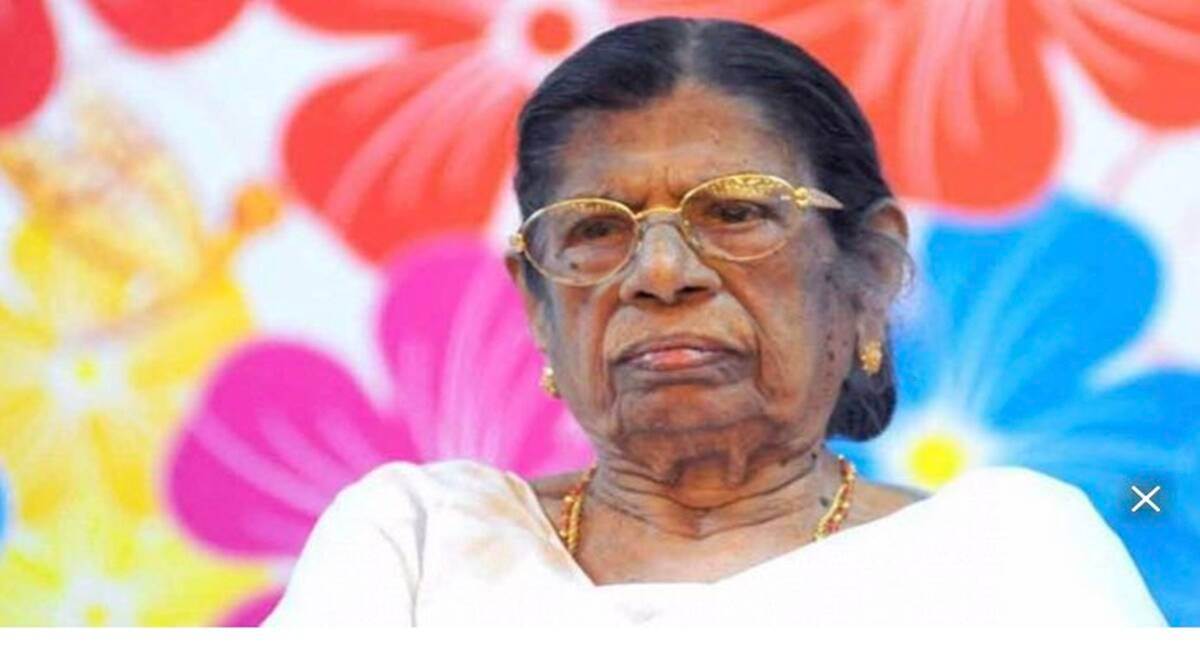 KR Gouri Amma
KR Gouri Amma The media claims that K R Gouri Amma is no more. I beg them to be more precise. True, her physical body has passed — after seeing her through a glorious life — with great honour. On the strength of that body which was part of that extraordinary spirit, we saw a woman, an avarna-born woman, overcome the worst of caste and gender and rise up to the highest echelons of power in Kerala. Someone whose spunk was such that she walked out of a political party that she had devoted a lifetime to at the age of 76 to form her own party.
Gouri Amma sought freedom in so many ways — from caste restrictions on education, dress, public engagement; from gender norms which shaped our modern institutions, according to which girls were to be educated to become good housewives and mothers; from the invisible restrictions on women in politics, that they should wait for delegated authority and not take up the “serious” business of ruling. Some time back, finding the word “feminist” inadequate to represent those who resisted patriarchy in Malayali society in generations past, I coined one — swatantryavaadini — she who speaks for freedom. In my mind, Gouri Amma remains a bright beacon among swatantryavaadinis, foremothers of Malayali feminism.
Emerging as a student leader, she survived police torture and re-entered public life with an even-greater passion. From 1948 to 2006, she fought 16 elections and won 13, becoming the second-longest-serving Member of the Legislative Assembly in Kerala. She worked as a minister in four communist ministries, winning accolades for her excellent leadership, drawing to her skilled people irrespective of whether they were communist or not. In 1987, the CPM’s election campaign projected her as the next Chief Minister of Kerala. In her political choices, she stayed independent of her husband (CPI leader T V Thomas) — braving the emotional storm which she interpreted and re-interpreted in her autobiographical writings. Each of those interpretations is a struggle to heal, and they convinced me that the heart does not heal well for some, and never permanently, perhaps. And in time, maybe it grows lonelier in a society which punishes a woman for leaving a man.
The passing of her body leaves us stranded in a strange isle of grief. On the one hand, one cannot help wailing: Will there be another like her ever? We grieve not only for her body, we also lament for this society, the future of which seems bleak, incapable of producing yet another like her. Will there be a woman politician whose male peers cannot trample upon, who cannot be exclusively corralled into “womanly” concerns like public health or social welfare? Will there be another of her kind who will be entrusted with Revenue, Civil Supplies, Sales Tax, and Excise portfolios? Will there be another woman who will be chosen to pilot historic, landmark legislations in the history of Kerala? Will there be another woman politician who will both survive the perils of marriage and separation and thrive afterwards? Will there be another woman who the dominant left in Kerala will project as the next Chief Minister in an election campaign?
On the other hand, as a historian of gender and a critical feminist, I am rocked by the awareness of what she could and could not do as a swatantryavaadini, suddenly heightened by her passing. In the Kerala Legislative Assembly, she fought for them, and her speeches are peppered with astonishing feminist insight. On the matter of women’s employment she once asked in the 1960s — why are not women being trained as drivers and conductors? In the discussion of the Travancore-Cochin Nurses and Midwives Bill, 1952, she pointed to both the stigma faced by women in some lines of work and the folly of destroying women’s traditional lines of employment. The demand for trained midwives has been rising, she noted, but the training is slow-paced. Trained midwives suffered much: “Though people seem to feel the same the contempt and misunderstand they have for film stars for nurses and midwives, they have carried on in this line of work putting up with all of it.” And traditional birthing women were not to be devalued: “…In my place, there is no chance to find a doctor or nurse for childbirth. It is these women who attend to the births there. But once this Bill gets passed, it will be illegal for them to practice without registering, and when they register, they will be liable to be penalised; this is sorry.”
Yet there were limits she would not cross. Particularly telling was a discussion in the Assembly in 1955, in which a member P Kunjan asked for a clarification regarding the nominations to the State Social Welfare Advisory Board, whether Scheduled Castes were represented. It emerged that most members were savarna women, that too, wives of powerful politicians or representing savarna social work institutions. Gouri Amma questioned the basis of selection, but did not take Kunjan’s question forward. Rather, she limited her demand to representation for the Mahila Samgham which was a growing force in the Travancore-Cochin State.
This was not her personal failing; just that this was the limit of the imagination of social and gender justice in communist politics of those times. How then, do we break out of this forlorn reef of pain? Maybe by imagining her as a force of nature lent to us for a while. Which, however, remains deathless and omnipresent.
The writer is a historian and professor, Centre for Development Studies, Thiruvananthapuram
- The Indian Express website has been rated GREEN for its credibility and trustworthiness by Newsguard, a global service that rates news sources for their journalistic standards.

